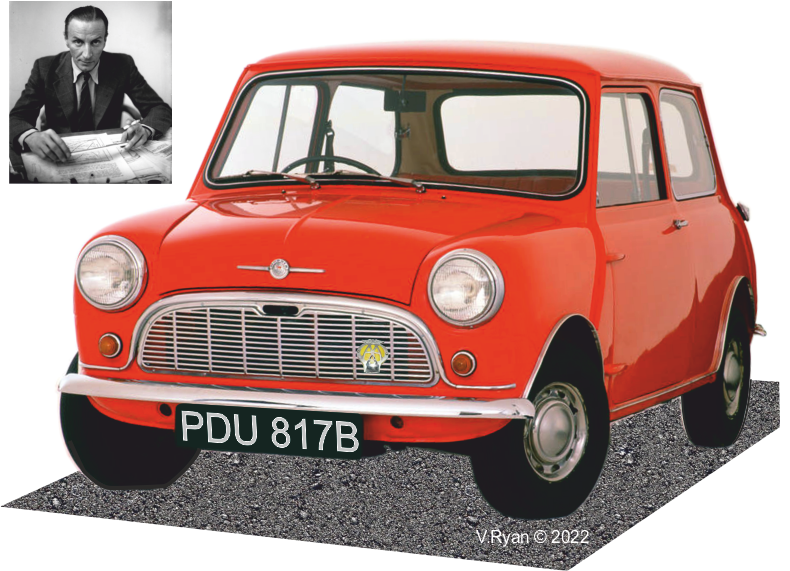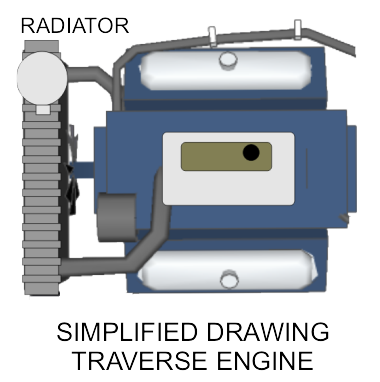| CLICK HERE FOR INDEX PAGE | |
| THE AUSTIN MINI - AN ICONIC DESIGN | |
| V. Ryan © 2010-2023 | |
| PDF FILE - CLICK HERE FOR PRINTABLE WORKSHEET | |
| CLICK HERE FOR INDEPENDENT LEARNING (BOX LEARNING EXERCISE) | |
| PDF FILE - CLICK HERE FOR ISSIGONIS REVISION CARDS | |
| CLICK HERE FOR POWERPOINT VERSION OF ISSIGONIS REVISION CARDS | |
 |
|
|
INTRODUCTION: The Austin Mini, first rolled off the production line in 1959 and was the brain child of Alexander Arnold Constantine Issigonis. It was manufactured by the British Motor Company and was developed as a result of the shortage of petrol during and after the Suez crisis of the 1950s. It had a production run of 5.3 million cars and was the best selling British car, between 1959 to 2000. During the 1960s it became popular with celebrities and was seen in films and on TV across the world, ensuring that it became design icon. One of its most famous appearances was in the film ‘The Italian Job’, driven by actors including Michael Cane. The MINI brand is now owned by BMW and they have produced a series of modern versions of the Mini, also proving to be popular. |
|
|
|
|
|
A STYLE BENCH MARK: The style / shape has evolved, but remains essentially the same. It is still a small car with similar curves and lines as the original 1959 car, although a slightly larger version. When comparing the sketches of the 1959 and 2010 Mini cars, the distinct shape of the Mini can be clearly seen. The 1959 ‘stocky’ appearance is still apparent in the 2010 model, despite decades of development. BMW have tried to keep to the original format when styling the car. |
|
|
A BENCH MARK FOR OTHER MANUFACTURERS: The Mini has set the bench mark of good design, in terms of style and engineering innovation, for similar cars produced by other manufacturers. There have been many attempts to emulate the style of the mini and its space saving features. The two sketches below, show the BMW Mini and the Suzuki Swift. The Suzuki Swift is a similar size and shape, clearly aimed at attracting the same customer type. They are competing in the same ‘small car’ market This emphasises the way in which the Mini has determined design trends amongst other manufacturers. |
|
|
TECHNICAL INNOVATION: Throughout its evolution, the Mini was at the forefront of design and engineering innovation. It was the first small car to have front wheel drive and had small 10 inch wheels. It had a traverse engine, which saved space and allowed a reasonable sized engine to fit into a small engine cavity. The sump was designed so that the same engine oil also lubricated the gears system. The radiator was on the left side of the engine cavity, again saving space. The mini had a suspension system based on rubber cones, not conventional springs. This saved further space, allowing the car to be lower down than other similar cars of its day. Sliding windows were a feature developed with this small car in mind. This innovative design meant that storage space was available in the doors. |
 |
| The Mini remains popular due to it iconic status as a fashionable, trendy, small, innovative, stylish car. | |
|
SUMMARY The original Mini design and subsequent designs have set the bench mark for other ‘compact’ car manufacturers to follow. Ground breaking engineering and technology was developed during its design and manufacture, which continues today. The original Mini was an improvement on previous ‘small’ car design. The original Mini set new standards in terms of the features it offered and its style, especially with the more expensive deluxe models. The Mini brand has stood the test of time, with modern BMW versions being as popular as early models. The Mini design is instantaneously recognisable. The Mini design has inspired other manufacturers to design their own small cars, some even look similar. Mini designs remain aesthetically pleasing, despite the passing of decades. |
|
| CLICK HERE FOR PRODUCT DESIGN INDEX PAGE | |